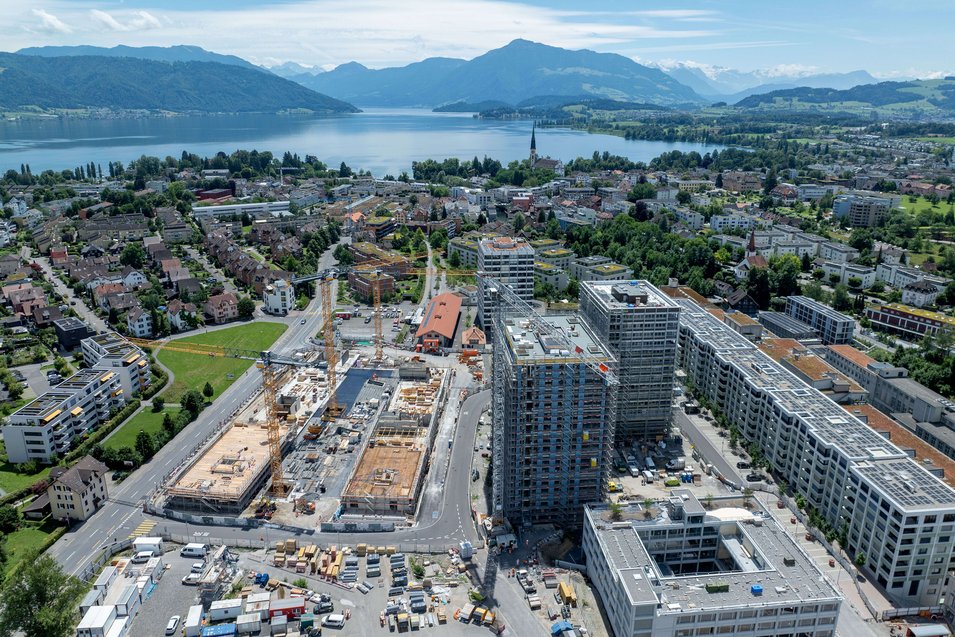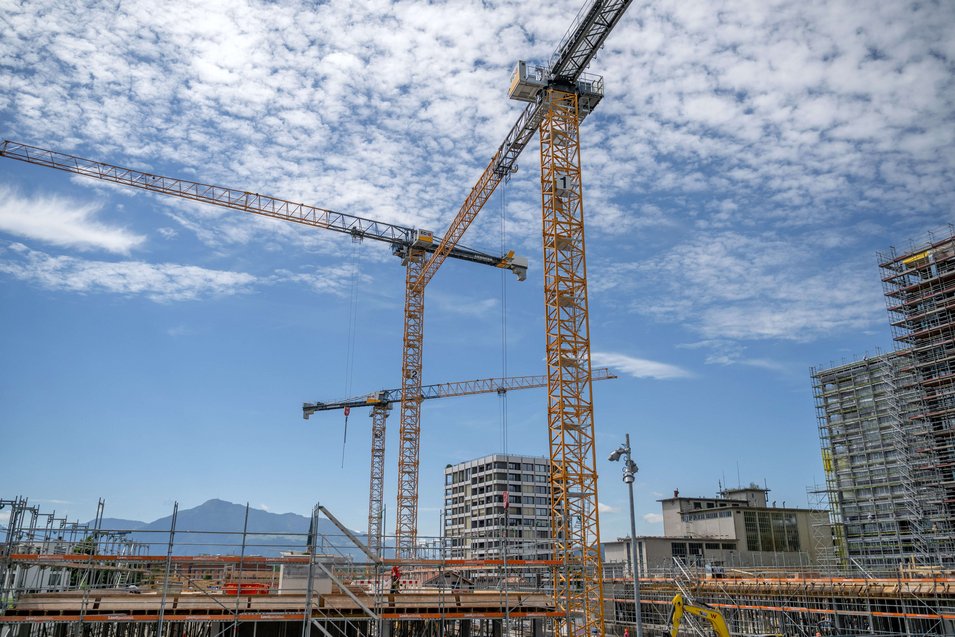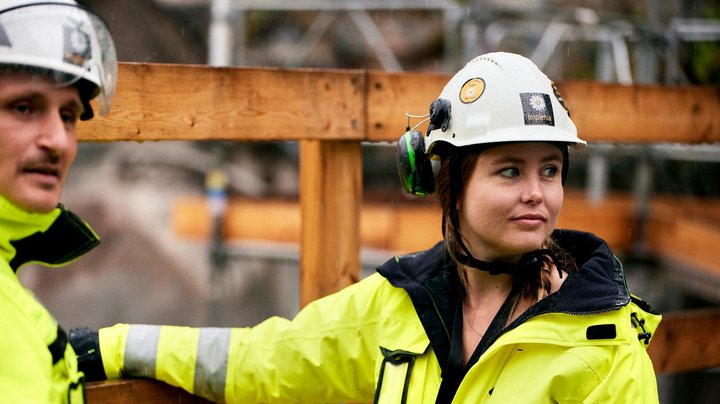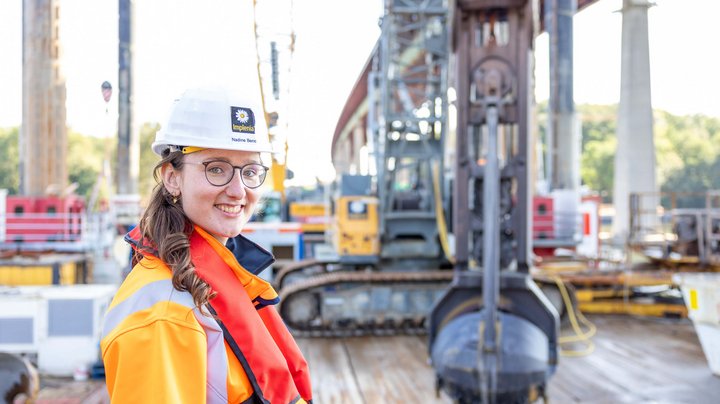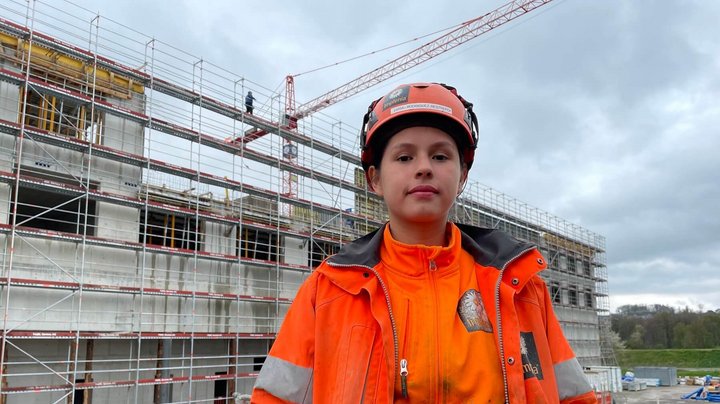Get in sideways and aim high
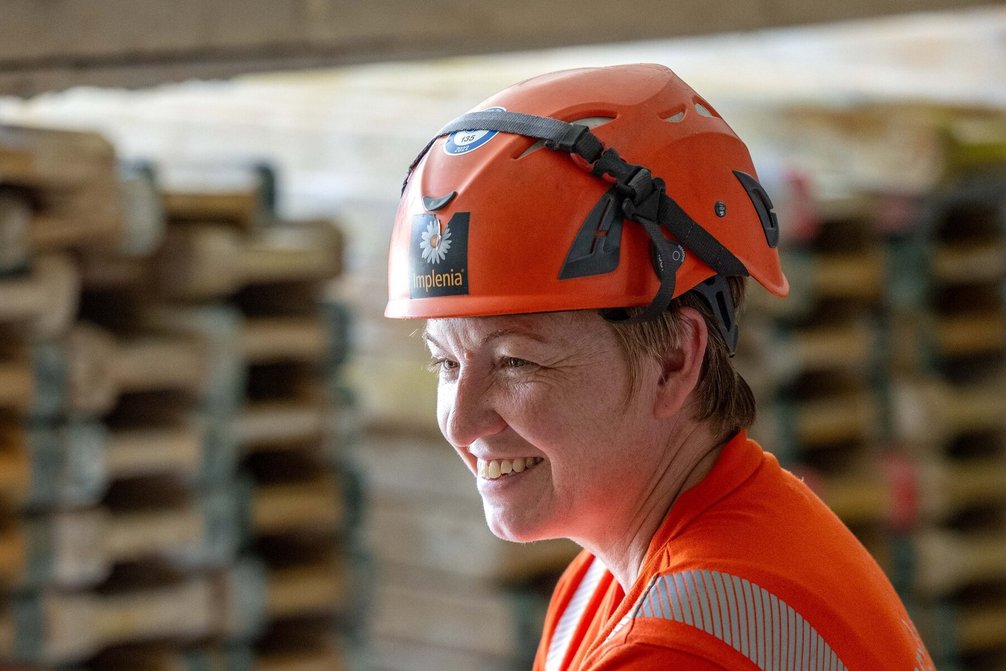
It's lunchtime and therefore the best time to talk to Iris Harnisch about her work. As a crane operator, she can't leave her workplace at will. There are 52 meters in height, or 200 steps, between her cab and the ground. Iris Harnisch operates one of the three cranes that are being used in the third construction phase on the Papieri site in Cham. The "Next Level Spaces" project is creating 10,000 square meters of office, commercial and retail space here. Implenia has been commissioned with the master builder work for buildings E and F, where Migros, among others, will be moving in.
Vertical take-off as a career changer
The Aargau native has been working as a crane operator at Implenia for 20 years. However, she came to her profession in a roundabout way. She completed her apprenticeship in a completely different industry: "I'm a career changer. It's hard to believe, but I originally trained as a hairdresser." She only discovered her fascination for construction cranes later through an acquaintance who was looking for crane operators. "I seized my chance and ventured into the cab of a crane despite my fear of heights." In the mountains, she still feels queasy when she stands on a ledge. But she feels safe up there in the crane, laughs Iris. "The crane is stable, the ascent and descent are protected and the view from my workplace is simply breathtaking - on the Papieri site it even includes a view of Lake Zug and the Alps of Central Switzerland."
Iris Harnisch in the video
Another video with Iris Harnisch is available on the papieri Cham YouTube channel. She describes her job as follows: "A job with an overview and like a real game".
@implenia Our crane operator Iris shows you where she works 🏗 #crane#construction#womeninconstruction#internationalwomensday#fy#implenia♬ original sound - Implenia
Five minutes to work
Her working day begins with a "half hundred meter run" - not quite as fast as athletes run on the tartan track, but practically vertically up into the air. "Fortunately, the newer cranes are equipped with inclined ladders. I'm at the top in around five minutes. I then stay there except for short breaks and, of course, lunchtime." The platform in front of the driver's cab covers just over one square meter. Iris can also stretch her legs here.
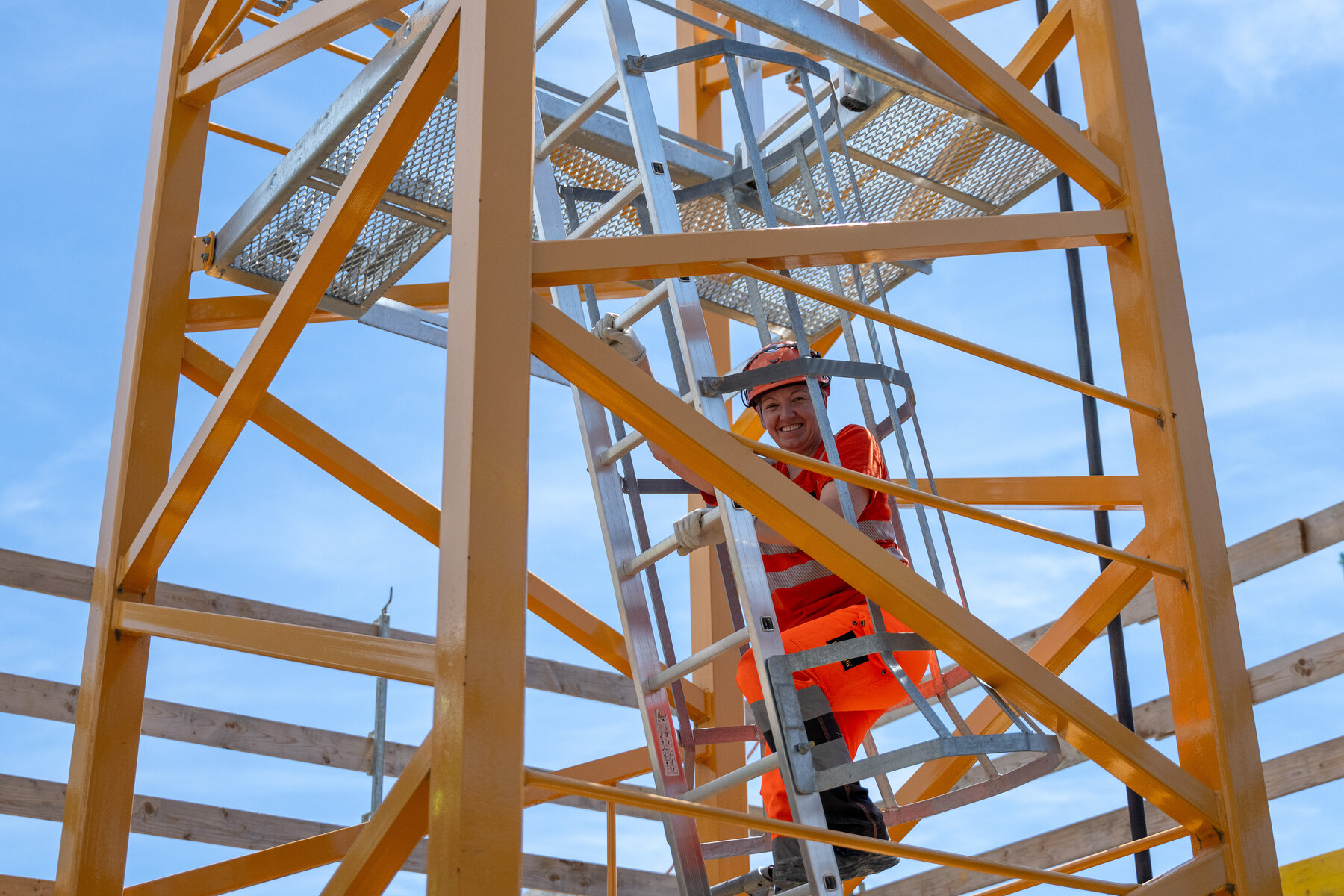
Concrete always takes priority
But there are days when she spends nine or ten hours at her crane controls - especially when concrete work is due. Then things have to move quickly so that the liquid concrete can be transported from the mixer on wheels, sometimes across the construction site, to the right place where it can be processed. "Concrete always has priority, so everything has to be ready on time." Of course, Iris can compensate for the overtime caused by the construction process later.
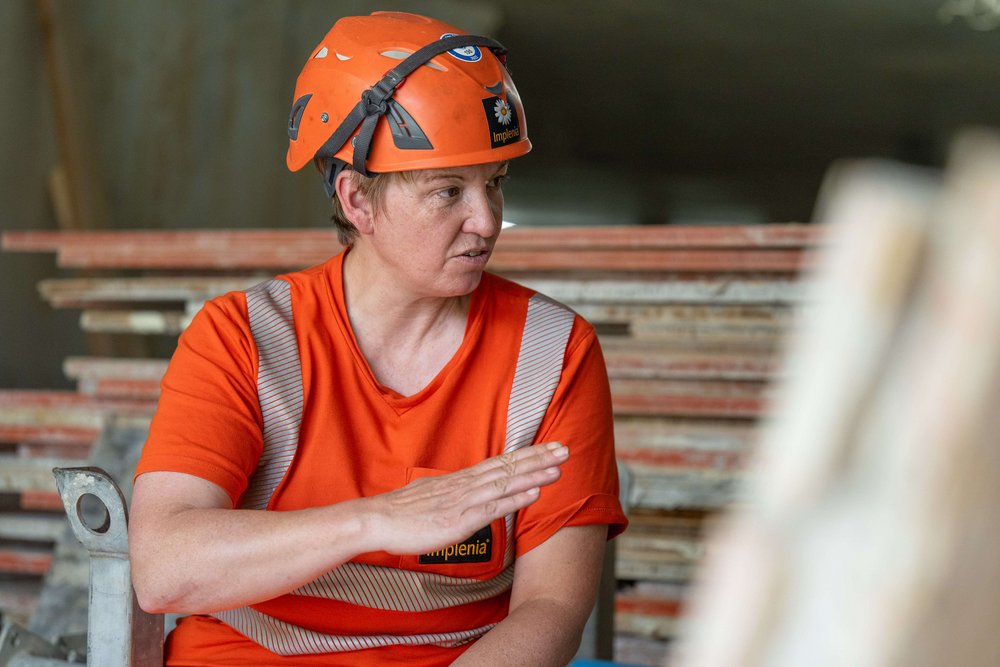
"For me, every construction site is both a challenge and an adventure."
Iris Harnisch, crane operator
Connected by radio
Communication with the team on the ground is by radio. "Foreman, foreman and ironworker give me instructions." Around ten people on the ground are equipped with radios. The foreman's morning briefing helps the crane operator to keep track of the work processes. This means she knows in advance which material transports need to be prioritized. "Over time, you get to know each other and I can tell who is calling on the construction site by their voice," explains Iris. However, she always has to keep a close eye on what is happening deep down on the construction site.
This job requires constant attention
"The work requires a high level of concentration and constant attention," she explains. She does most of her work from above at a distance. A camera helps her to recognize details on the construction site. Shadows obstruct the view and wind also makes the work more difficult. "Wind can make the loads swing dangerously. I then decide whether it is safe to continue working or whether we need to take a break with the crane for safety reasons," explains the experienced crane operator.
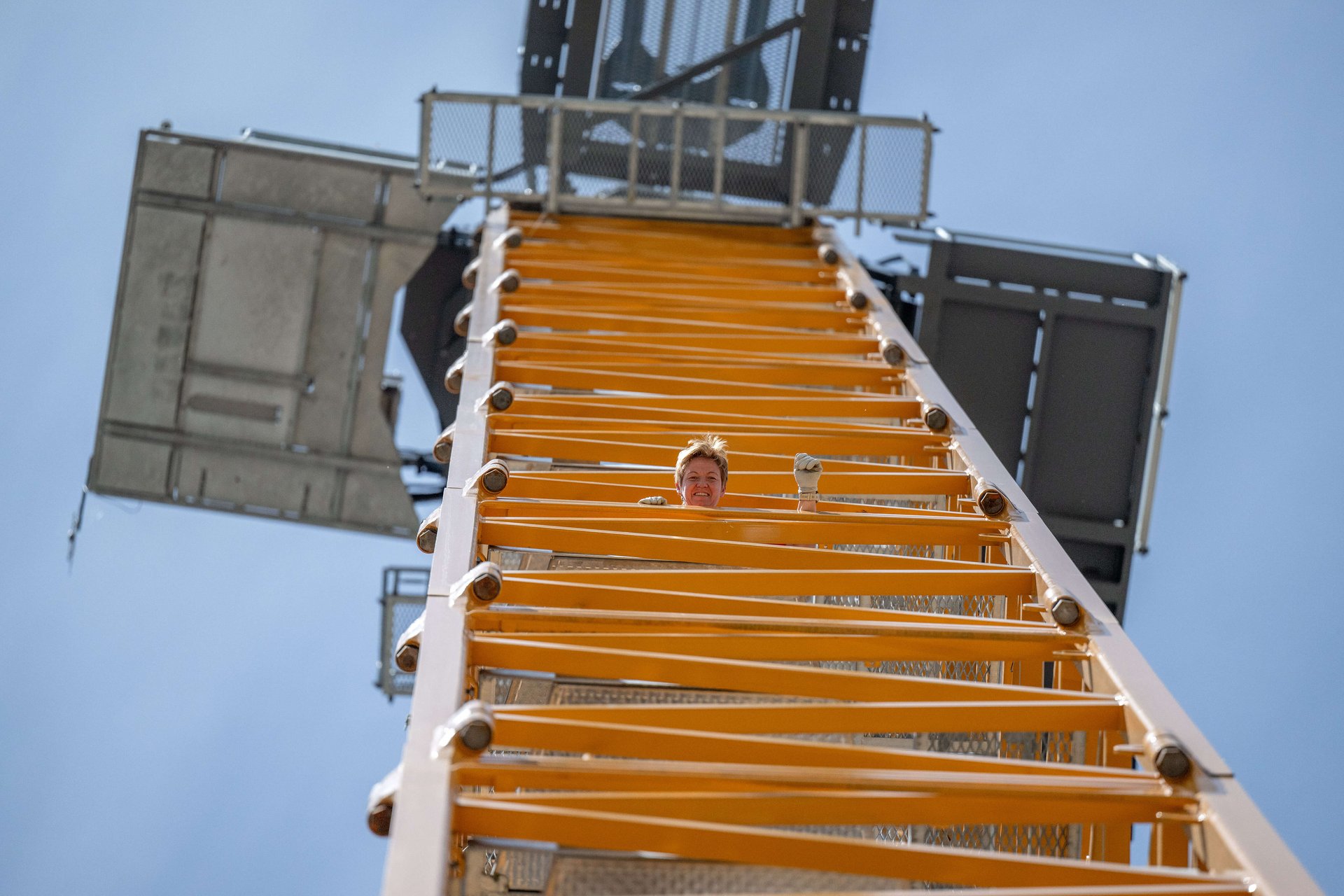
Important hub at lofty heights
There are currently three cranes on the construction site. With the highest crane, Iris operates 50 meters with her crane jib and is therefore responsible for a radius of 100 meters. "Each crane has its own radius, but sometimes they overlap. Working together with the other two crane operators is another challenge. "We have to communicate constantly to avoid accidents," explains Iris. And so Iris is an important hub on the construction site - both in terms of logistics and safety.
Ascent to the most beautiful workplace in the world
The lunch break is over. Before Iris tackles the 200 steps up to her driver's cab once again, she says: "Even though I rarely get to enjoy the view, I have the most beautiful workplace there is." She perceives the construction site very differently from above. "What fascinates me most is that I can watch something new being created from above and at the same time be part of this big picture."
This portrait is an excerpt from theoriginal article "Queen of the skies" on the Papieri Cham website.

